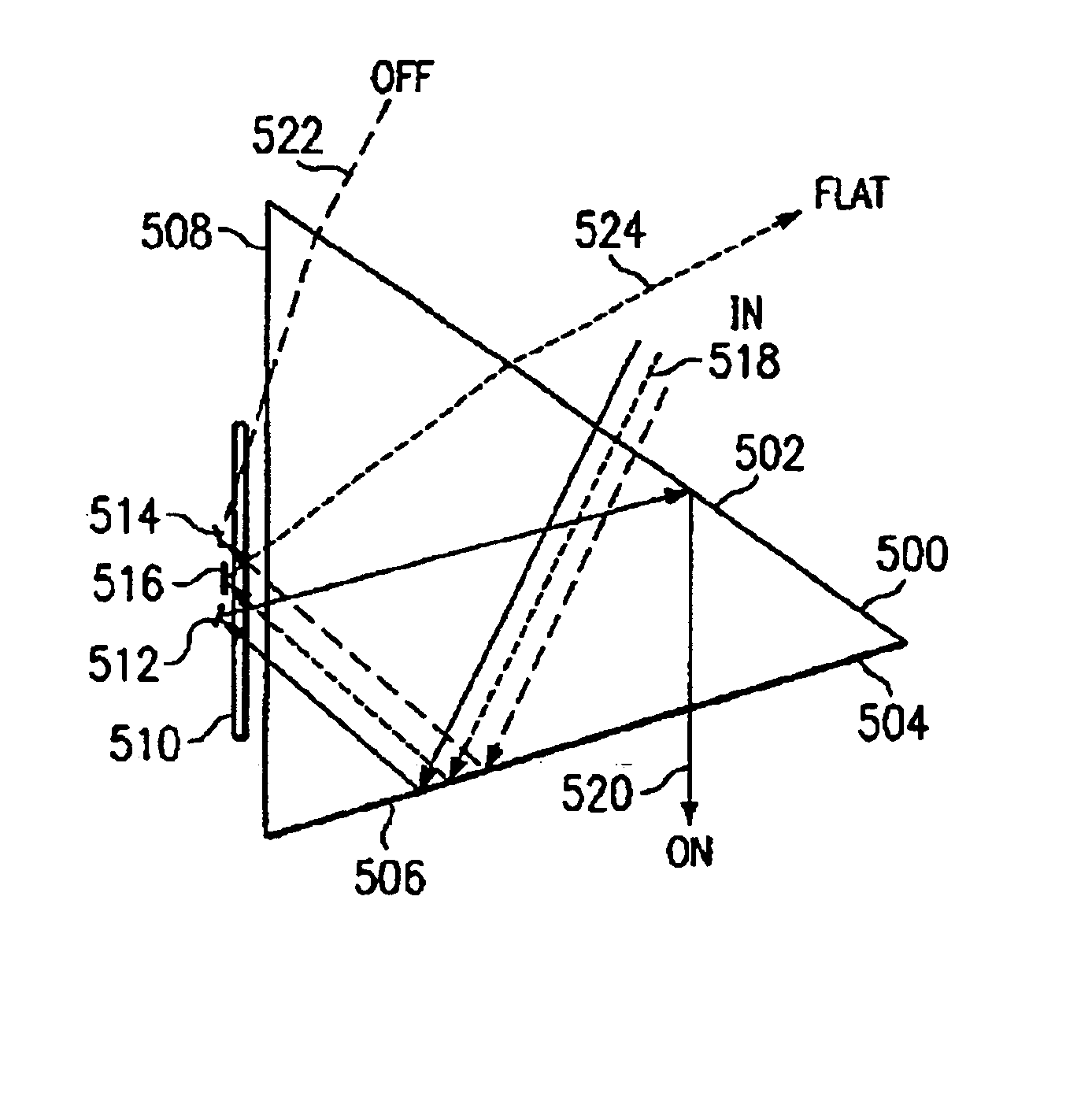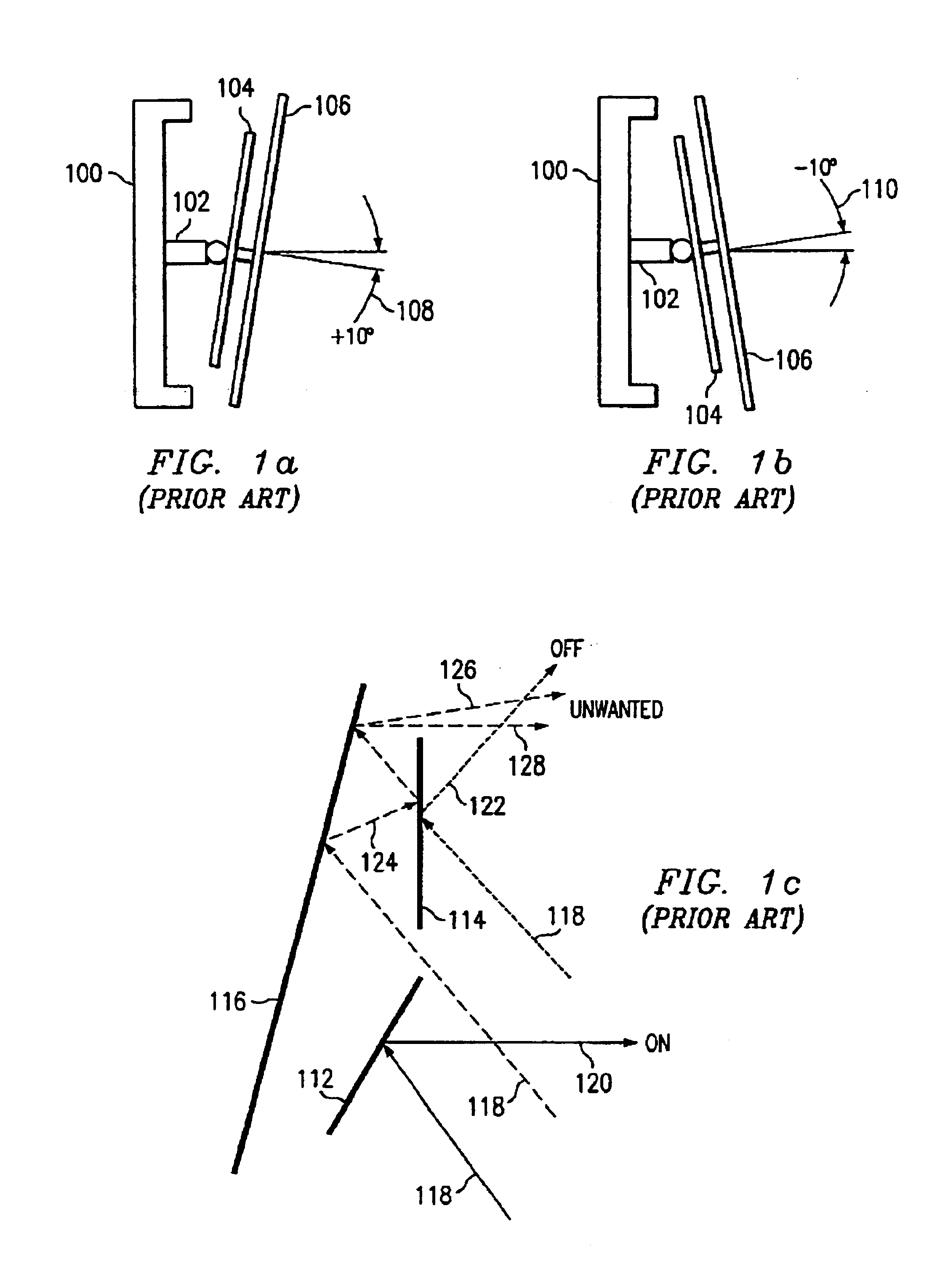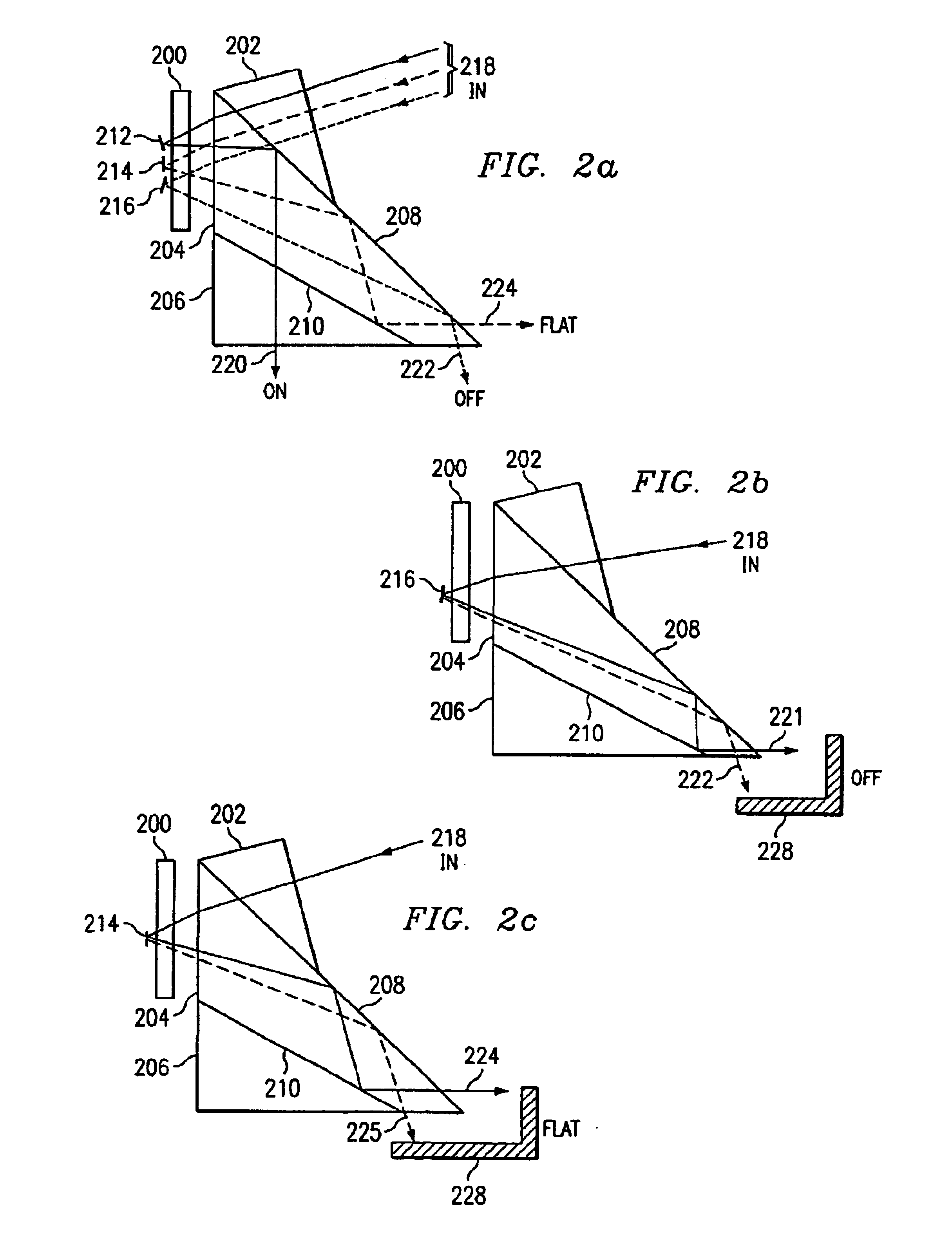Prism for high contrast projection
a high contrast, prism technology, applied in the field of optical elements, can solve the problems of unsatisfactory filtration, unsatisfactory optical filtration, mechanical stress, etc., and achieve the effects of reducing system contrast, preventing light contamination, and high contras
- Summary
- Abstract
- Description
- Claims
- Application Information
AI Technical Summary
Benefits of technology
Problems solved by technology
Method used
Image
Examples
first embodiment
[0029]FIG. 2a is a drawing showing the present invention for a TIR prism assembly, which separates unwanted off-state and flat-state light from the projection ON light bundle in a single SLM projection display system. This configuration consists of a three-element prism coupled to a single SLM 200. Incoming illumination 218 enters through a first prism element 202, which directs light on to the active surface of SLM 200. This first prism 202 is attached to the upper portion of a second larger prism 204, which has a first TIR surface 208 and a second TIR surface 210, for separating and routing the various types of reflected light, coming off the surface of the SLM, out of the prism assembly without contaminating the desired ON projection light. A third prism 206 is attached to the bottom side of prism 204 to provide an equal optical working distance on the input and output side of the projection cone for the ON pixel projection light.
[0030]In operation, the first prism element 202 di...
third embodiment
[0038]FIG. 4 is a drawing showing the present invention for a TIR prism assembly where unwanted off-state and flat-state light is separated from the projection ON light bundle in a multi-chip [two or more, three shown for red (R), (G), (B)] SLM projection display system. This prism assembly incorporates TIR surfaces 410, 412 as close as possible to the SLM devices 400, 402 to directly receive the unwanted light from the SLMs and direct this light to an optical heat sink (not shown). The assembly consists of prism 406, 408 for getting white light 416 into the system and getting the projected ON light 420 out of the system into a projection lens (not shown) in a display application, a color splitting / recombining prism assembly 404 for splitting the white light 416 into the three R-G-B color beams, and three respective red (R) 402, green (G) 400, and blue (B) (not shown but located on the opposite side of the prism from the red device). The three prism elements have additional TIR surf...
fourth embodiment
[0041]FIG. 5 is a drawing showing the present invention for a low-cost, single-element TIR prism having two TIR surfaces to separate the unwanted off-state and / or flat-state light from the projection light bundle and route it to an optical heat sink. Although somewhat larger is physical size, a single TIR prism element tends to be lower cost and is therefore attractive in lower end systems where cost may be more important than size. This configuration consists of the single prism, which has a first side 500 with a first TIR surface 502, a second side 504 with a second TIR surface 506, a third side 508, and a SLM deice 510 mounted in close proximity to the third side 508 of the prism. Optionally, as in the earlier cases, the SLM package can be attached directly to the third side 508 of the prism.
[0042]In operation, incoming light 518 enters the through the first side 500 of the prism at an angle greater than the critical angle of the second TIR surface 506 and reflects off this TIR s...
PUM
 Login to View More
Login to View More Abstract
Description
Claims
Application Information
 Login to View More
Login to View More - R&D
- Intellectual Property
- Life Sciences
- Materials
- Tech Scout
- Unparalleled Data Quality
- Higher Quality Content
- 60% Fewer Hallucinations
Browse by: Latest US Patents, China's latest patents, Technical Efficacy Thesaurus, Application Domain, Technology Topic, Popular Technical Reports.
© 2025 PatSnap. All rights reserved.Legal|Privacy policy|Modern Slavery Act Transparency Statement|Sitemap|About US| Contact US: help@patsnap.com



